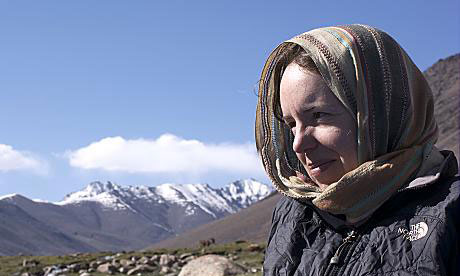British aid worker Linda Norgrove was killed by US grenade, admits William Hague
Foreign secretary tells Commons how Linda Norgrove died after US navy seals tried to rescue her from militants in Afghanistan

Members of a US special forces unit have been disciplined after they accidentally killed Linda Norgrove, the kidnapped Scottish aid worker they had been sent to rescue, the foreign secretary, William Hague, said today.
One of the special forces team threw a fragmentation grenade into a gully from where her kidnappers had emerged and had begun firing back, without realising Norgrove was sheltering there, the investigation has confirmed.Norgrove was an experienced aid worker who had been working with the US agency Development Alternatives, Inc.
Hague told MPs that the official inquiry into the botched rescue mission found that the team had then failed to report using the grenade, breaching US military law.
In a statement to the Commons, Hague paid tribute to the aid worker, who was 36 when she died, and her parents, John and Lorna Norgrove, who live in a remote township in the Western Isles.
Although the troops involved had shown "utmost courage" by mounting such a dangerous night-time rescue mission, the Norgroves deserved the full truth about the "terrible tragedy" of their daughter's death, he said.The couple, who flew to London to be briefed in advance by the foreign secretary and his officials about the inquiry's findings, had "shown inspiring strength, dignity and fortitude throughout their terrible ordeal", Hague said.
The official report confirms the detailed account of the botched rescue mission and the disciplinary action revealed by the Guardian five days after Norgrove was killed. Senior sources had said that fragmentation grenades were too dangerous to be taken on a rescue mission, an issue not discussed by Hague. But the rescue mission itself was controversial: Afghan tribal elders said they were close to starting negotiations for her release when the raid took place.
Hague said that, according to intelligence sources, her life was "in grave danger from the moment she was abducted". He said they feared she would be passed to senior Taliban or be taken to an inaccessible location."We judged that the only credible prospect of securing her release was through a rescue attempt, which is why I authorised such an attempt to be made," he said.
US and British officials initially said she was killed by an explosive vest used by the insurgents who had kidnapped her. "It is a matter of concern that the facts of how Linda Norgrove died were not made clear immediately after the operation was carried out," Hague said.
While her wounds were consistent with an explosive vest, senior US officers involved in running the mission only discovered some hours later that a grenade had been used. They alerted their commanders, who ordered an immediate investigation.
Further details of its findings, which have already lead to an overhaul of US and British hostage rescue procedures, will be published early next year after the coroner's inquest into her death has been completed.
Hague said tracking and rescuing Norgrove after her kidnapping on 26 September had been the "sole mission" of about 1,000 US and Afghan soldiers. Their operation pinpointed two small groups of buildings high in a steep valley in Kunar province, eastern Afghanistan: a remote, mountainous area normally reached only by pack animal or foot.
He said the operation took place at night in total darkness; the US unit landed on a "near-vertical incline of a rugged mountainside, 8,000 feet in height" and had to assault two groups of buildings staggered up the slope.In a sudden firefight between the US troops and the insurgents lasting about a minute, a grenade was thrown by one rescuer fearing for his life into a gully where the insurgents had emerged. After moving up the mountainside, the rescue team returned to the gully and discovered Norgrove's mortally wounded body. She was immediately examined by US special forces medics, but could not be saved.
John and Lorna Norgove have set up an Afghan aid charity in their daughter's memory, the Linda Norgrove Foundation. The couple said it would take several days before they would respond.
"We are grateful to have been briefed in detail by the UK and US military officers who led the inquiry into Linda's kidnapping and subsequent failed rescue attempt. We would like some time to digest this and the contents of the report before we make any further comment," they said.Gen James Mattis, commander of US central command, who oversaw the joint US-UK inquiry, said Norgrove was "a remarkably valiant young woman whose courage and compassion were well known to the Afghans she was there to help. Her dedication to humanitarian service – and the support of her family – have been an inspiration to us all."
